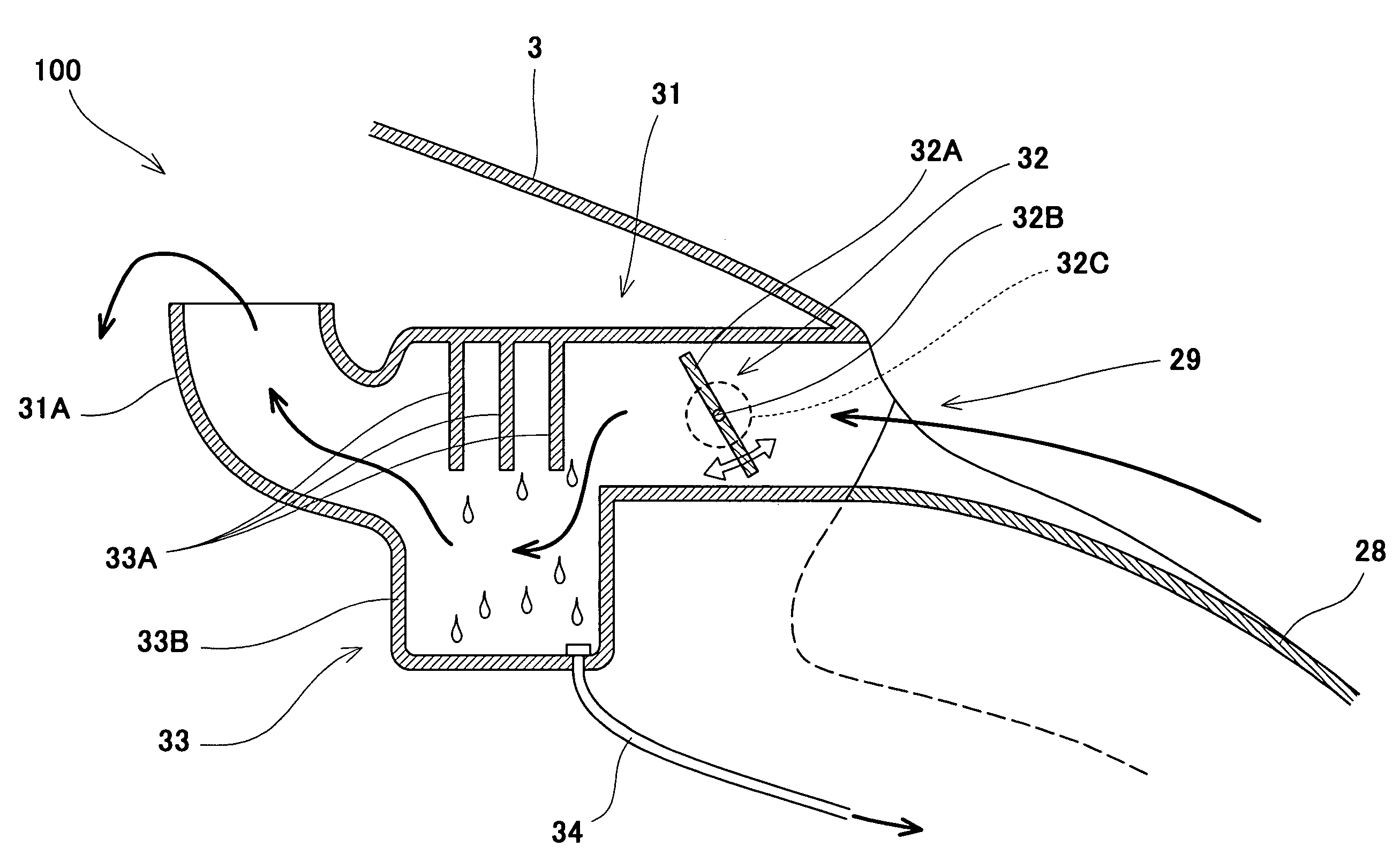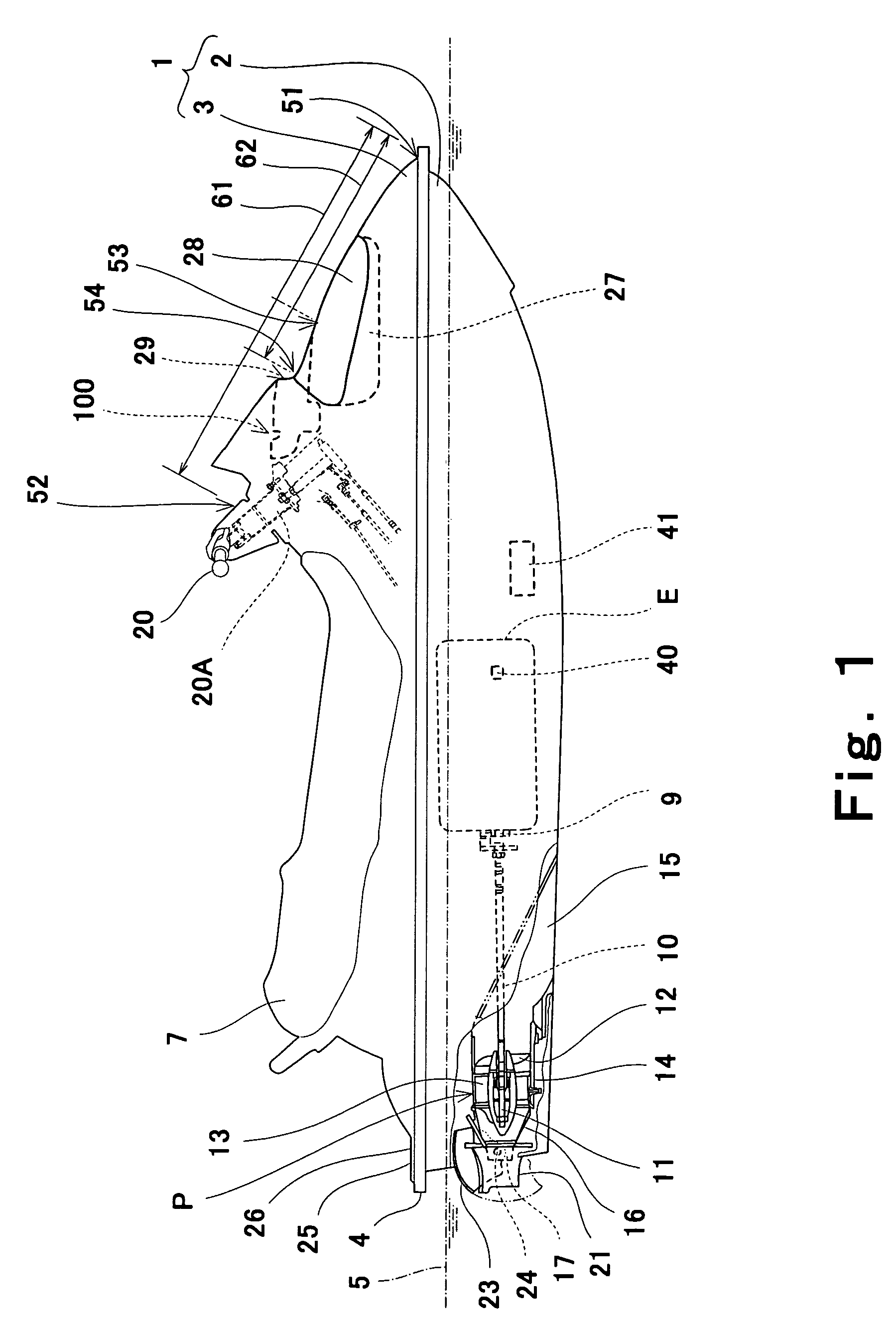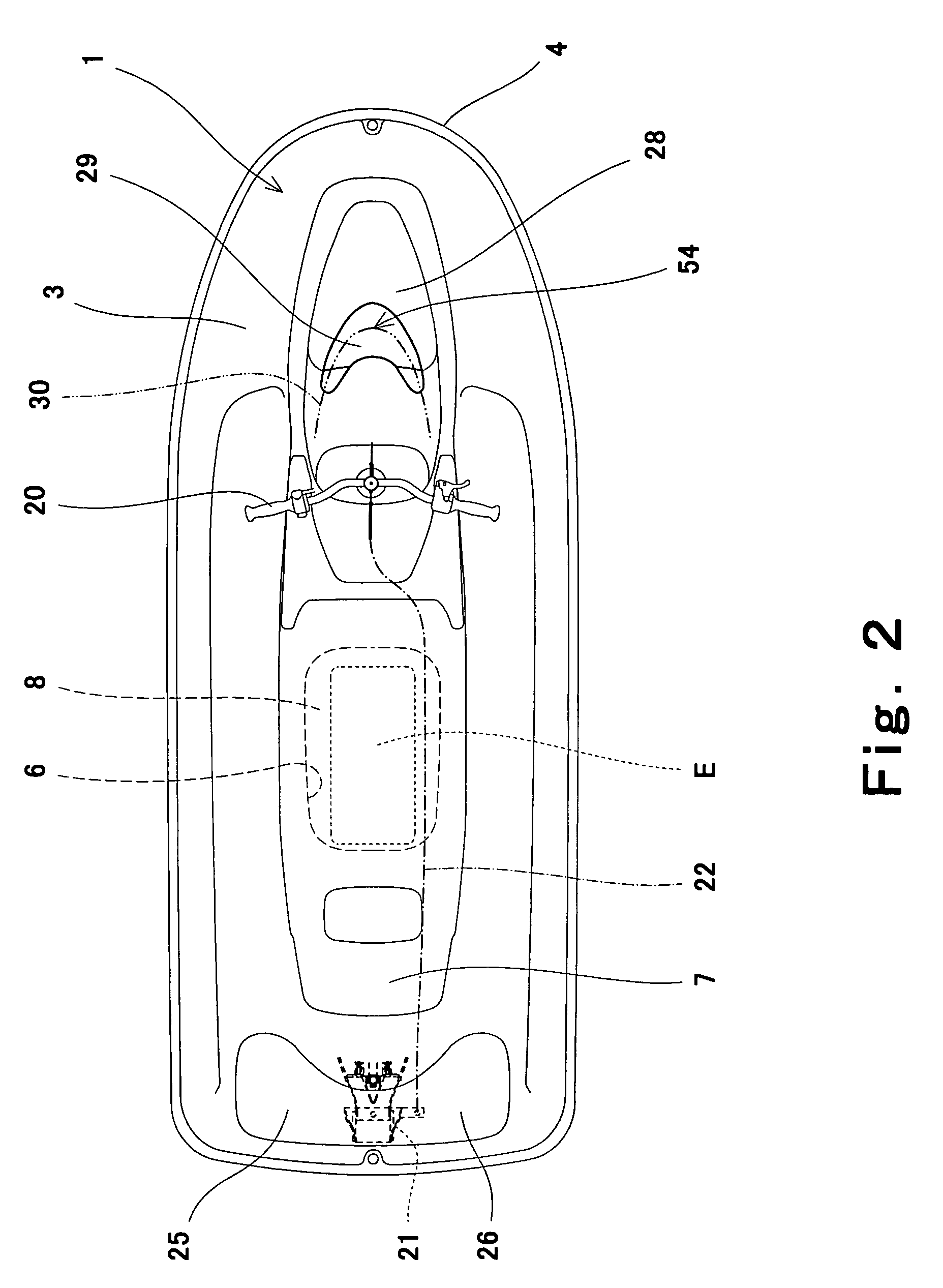Personal watercraft
a watercraft and propulsion technology, applied in special purpose vessels, steam power plants, vessel construction, etc., can solve the problems of insufficient taken-in air within the engine, inability to achieve desired performance, and difficulty in taking in a large amount of air through these gaps, so as to achieve smooth air taking a large amount of air and sufficient air
- Summary
- Abstract
- Description
- Claims
- Application Information
AI Technical Summary
Benefits of technology
Problems solved by technology
Method used
Image
Examples
embodiment 1
[0033]The personal watercraft in FIG. 1 is a straddle-type personal watercraft provided with a seat 7 straddled by a rider. A body 1 of the watercraft comprises a hull 2 and a deck 3 covering the hull 2 from above. A line at which the hull 2 and the deck 3 are connected over the entire perimeter thereof is called a gunnel line 4. In this embodiment, the personal watercraft is constructed such that a waterline 5 in a certain condition of the watercraft is located below the gunnel line 4.
[0034]As shown in FIG. 2, an opening 6, which has a substantially rectangular shape as seen from above, is formed at a substantially center section of the deck 3 in the upper portion of the body 1 such that its longitudinal direction corresponds with the longitudinal direction of the body 1. The seat 7 is removably mounted over the opening 7.
[0035]An engine room 8 is provided in a space defined by the hull 2 and the deck 3 below the opening 6. An engine E is mounted within the engine room 8 and config...
embodiment 2
[0064]Referring to FIG. 4, an air-guiding system 200 having another configuration will be described. The air-guiding system 200 in FIG. 4 comprises an opening 60, an air-guiding pipe 31, a lead valve 61 as an openable valve, a filter 33, and the like.
[0065]In the air-guiding system 200 in FIG. 4, the opening 60 and the lead valve 61 replace the opening 29 and the butterfly valve 32 included in the air-guiding system 100 in FIG. 3. Therefore, hereinbelow, the opening 60 and the lead valve 61 will be described. The air-guiding system 200 is applicable to the personal watercraft in FIGS. 1 and 2.
[0066]As shown in FIG. 4, the air-guiding pipe 31 extends rearward from the opening 60 inside the body 1. A lower portion of the opening 60, i.e., a portion connecting the upper surface of the deck 3 which is located in front of the opening 60 to the inner surface of the lower portion of the air-guiding pipe 31 is curved forwardly and downwardly as in the structure shown in FIG. 3. A protruding...
embodiment 3
[0072]FIG. 5 is a partial side view of an air-guiding system 300 configured to penetrate a compartment 27 provided in the front portion of the deck 3 and a hatch cover 70 that covers an entrance to the compartment 27. The air-guiding system 300 is applicable to the personal watercraft in FIGS. 1 and 2.
[0073]As shown in FIG. 5, the hatch cover 70 is mounted pivotally around a pivot axis 71 on the deck 3. By pivoting the hatch cover 70 around the pivot axis 71, the entrance of the compartment 27 is opened and closed. A first opening 72 is provided in the hatch cover 70. A protruding portion 73 is provided on an upper edge portion of the first opening 72 to protrude forward and upward, as seen in a side view.
[0074]An air-guiding pipe 74 extends from the first opening 72 to an inside of the engine room 8. The air-guiding pipe 74 is comprised of a first air-guiding pipe 75 provided in the hatch cover 70 and located forward and a second air-guiding pipe 76 provided in the deck 3 and locat...
PUM
 Login to View More
Login to View More Abstract
Description
Claims
Application Information
 Login to View More
Login to View More - R&D
- Intellectual Property
- Life Sciences
- Materials
- Tech Scout
- Unparalleled Data Quality
- Higher Quality Content
- 60% Fewer Hallucinations
Browse by: Latest US Patents, China's latest patents, Technical Efficacy Thesaurus, Application Domain, Technology Topic, Popular Technical Reports.
© 2025 PatSnap. All rights reserved.Legal|Privacy policy|Modern Slavery Act Transparency Statement|Sitemap|About US| Contact US: help@patsnap.com



